Find It Again, Tony: Regretting passing on a 1970 Fiat 124 Sport Coupe
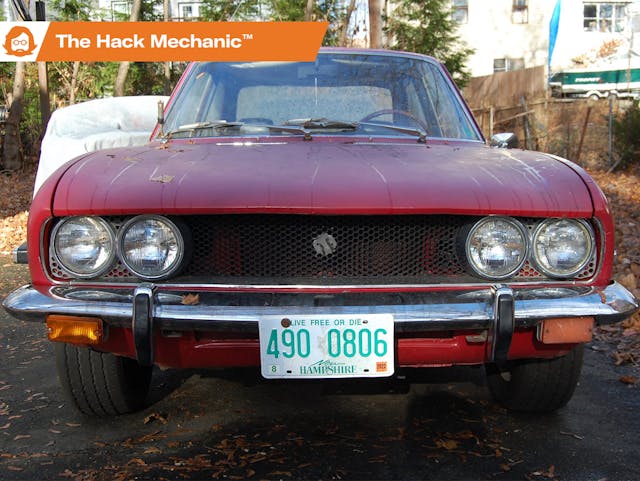
Just after Thanksgiving 2021, when I still thought I had both the space and the mental bandwidth to take on a 14th car as a winter project—and right before I got wrapped up looking at those two local basket-case Lotuses—I saw an intriguing ad on Facebook Marketplace for a 1970 Fiat 124 Sport Coupe, located near Londonderry, New Hampshire, less than an hour from me. The ad said:
“Hello everyone, up for sale is my very rare 1970 Fiat 124 Sport Coupe. It’s powered by a 1.6-liter twin-cam. Has a five-speed manual transmission, and it’s RWD. Motor runs excellent. Has a Weber carb and is bone stock. Needs the new water pump installed (easy job, I just don’t have the time). The car has Minilite wheels and new vintage-style tires. Handles like a dream. Four-wheel disc brakes stop well. Needs front calipers replaced, rears just done. The car spent its whole life in California, (so) rust is minimal. The interior (dash/seats) have cracks. Driver’s window needs to have the crank wire put back on tracks. Car is very fun and one of a kind up here! $5000 obo. May trade for the right car. Car is sold on bill of sale only. I also have the original California pink slip.”
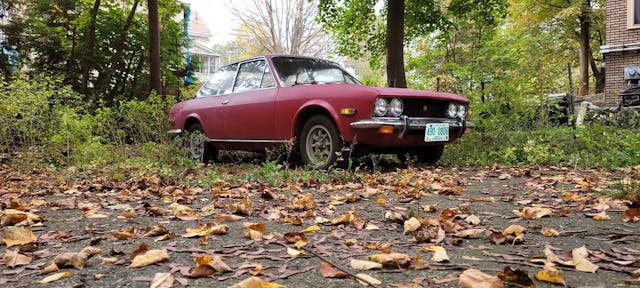
OK, sure, the ad was a bit of a hodge-podge and had the kind of red flags that scare off folks who subscribe to the adage that you’re not just buying a car, you’re buying the previous owner. But there are two kinds of automotive enthusiasts in this world—the kind who look for the best cars in the best possible condition that’ll experience the most market appreciation, and inveterate, unrepentant bottom-feeders like me who are never going to own the best of anything but are hell-bent and determined to sample as many cool cars as possible while we’re still breathing.
First, the model. When most folks hear “Fiat 124,” they think of the 124 Spider (technically, “124 Sport Spider”), the 2+2 roadster built by Fiat from 1966–81 and then picked up by Pininfarina through 1985. Both the Spider and the 124 Sport Coupe are offshoots of the 1966–74 Fiat 124 sedan and were fortunate to receive the wonderful twin-cam engine designed by former Ferrari engineer Aurelio Lampredi, instead of the sedan’s pushrod engine. The 124 sedan was only seen in the United States in small numbers (and, oddly, was the basis for the Russian Lada). Its little sister, the 128 two-door sedan, and the 124’s successor, the 131, were better known stateside.
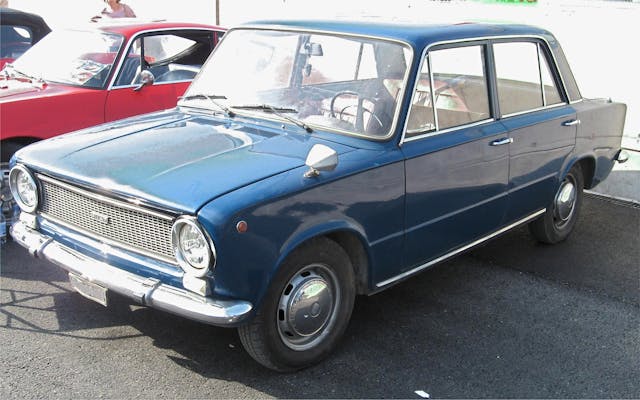
(Digression: 124 Spiders are wonderful enthusiast cars. The fact that nearly 200,000 of them were built, with over half of them imported into the U.S., has helped them to be plentiful enough to still be remarkably affordable. Decent drivers can be found for five grand. You can probably buy one of the best ones on the planet for $15K. I’ve long felt that folks who love affordable fun cars like 124 Spiders and Corvairs are smarter than I am.)
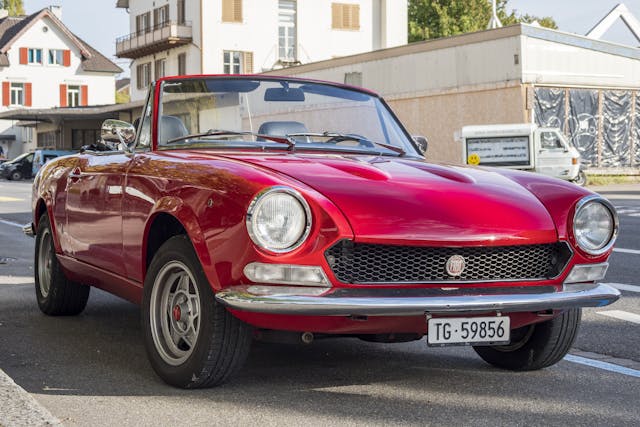
The 124 Sport Coupe wasn’t nearly as common in the U.S. as the Spider, and thus it doesn’t have the same universal recognition. It’s more of an “Oh, I forgot about that car … yeah, those things were cool” kind of car. But they are pretty cool, and like the Spider, they were pretty advanced for their time. All had the wonderful Lampredi DOHC engine, four-wheel disc brakes, double-wishbone front suspension, and, except for the early ones, a five-speed gearbox.
There were three versions of the 124 Sport Coupe—AC, BC, and CC. Although they all have the same elegant slender C pillars and a squarish tail, your eye sees them very differently. The type 124 AC coupes built from 1967–69 had single headlights integrated into the fenders and a small radiator grille, giving them a bit of a goggle-eyed look not unlike the Spider. They also have a lovely wood dash panel. It’s not the full wood dash and console like the Spider has, but still, it’s a nice accent piece.
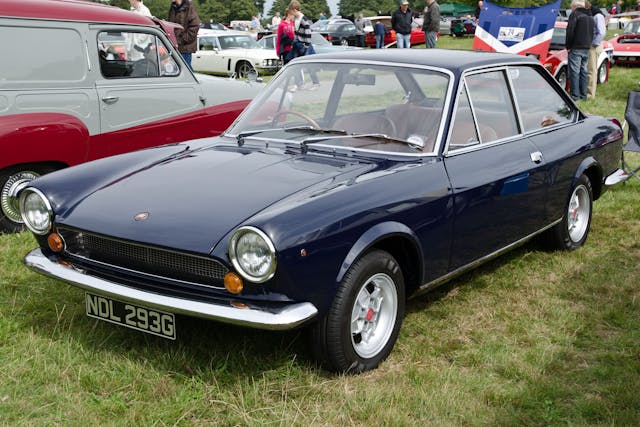
The BC coupes built from 1969–74 have an absolutely lovely restyled nose and grille that are very similar to the ones on the Fiat Dino Coupe (or, if you’re cynical, a first-generation Toyota Celica). Rather than having the MG-like headlight pods on the fenders like the AC, the BC’s hood line is raised up even with the fenders, and dual headlights are integrated directly into a larger radiator grille. Early BC coupes had the 1438-cc Lampredi engine; later ones received the 1608-cc engine and were badged “Sport 1600” on the trunk lid.
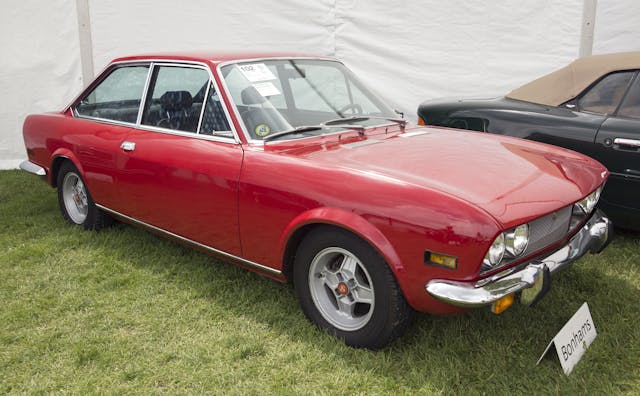
The CC coupes built from ’72–75 had the same hood and fender lines as the BC coupes, but the grill and headlights were restyled. Rather than the headlights peeking through an edge-to-edge grille, they sit in plastic panels that occupy the corners of the open section of the nose. A rectangular accent piece was added to the center of the grille, and it just looks silly and out of place. In addition, the front bumper was restyled with larger “bumperettes” and integrated directional lights. The effect of all three of these changes draws your eye toward their unnecessary detail and away from the elegant nose. The tail of the CC is different as well—it’s squarer and with the taillights located on the edges instead of across the back. Interior-wise, the black dashboard instrument panel was replaced with a brushed aluminum piece. It’s a bit of a more modern look, but not really my cup of Castrol.
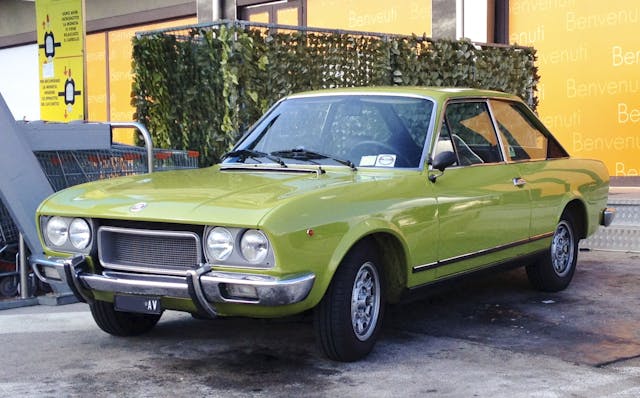
Although the 124 Sport Coupes don’t have the swoon-worthy rounded-hips-and-haunches-filled-out-in-all-the-right-places lines of an Alfa Romeo 105/115 Junior/GT/GTV, they—particularly the Type BCs—are lovely pieces of late-’60s / early-’70s Italian motoring art. It seems that, as has happened with people getting priced out of the vintage Porsche market and now chasing my beloved BMW 2002s, the upward spiral of Alfa coupe prices appears to be igniting interest in and value of Fiat 124 Sport Coupes. Reading the comments on the relatively small number that have come up on Bring a Trailer the last few years, the passion for these cars is much stronger than I knew. Rather than the obligatory “Fix it again, Tony” jokes from the 1970s (for the uninitiated, that’s an acronym for Fiat), the comments were thick with “I had one—I loved that car” or “I knew someone who had one—I loved that car” stories, something that’s also remarkably similar to my BMW 2002.
So, back to the ad. The five cell phone pics appeared to show an intact-looking car with badly faded red paint. While whenever I read the statement “rust is minimal,” I think “I’ll be the judge of that,” at least there weren’t yawning fist-sized holes plainly visible in the outer body, so there was hope that looking at it wouldn’t be a waste of time.
I swapped messages with the seller. He was very responsive in supplying me with additional photos of the car, including rust areas, but he seemed resistant almost to the point of denial when I told him that the photos clearly showed the car had the 1438-cc engine rather than the 1.6-liter he claimed it had (the distributor was on the wrong side of the engine for a 1600; the VIN plate listed “Motore 124AC.040, which is the code for the 1438-cc engine; and there was no “1600” badge on the back).
In addition to the car not having the cachet of being a 1600 Sport Coupe, I did a little reading and learned that it’s difficult to mount side-draft Webers onto the smaller engine due to the distributor being on the intake side. When that was combined with the rust in the photos he sent, my interest in the car waned.

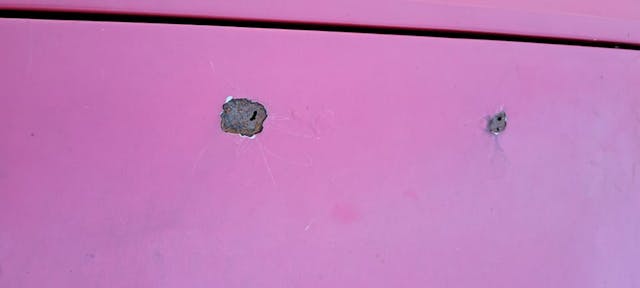
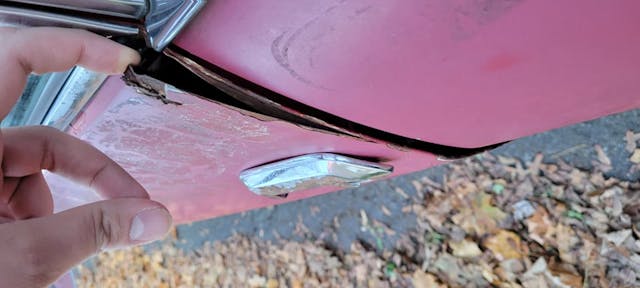

However, you never know unless you look. About a week later, I found myself driving up to Nashua, New Hampshire, to buy tires for my truck, and realized that I’d be within 15 miles of the Fiat. I messaged the seller of the Fiat and set things up. And thus, on a cold Saturday morning in November, I found myself face-to-face with a 1970 Type BC Fiat 124 Sport Coupe.
The seller was not what I expected. If for some reason we’d locked horns via text message over the car not being a 1600, he exhibited zero defensiveness or subterfuge in person. He was very nice young man, a car guy like me, open and affable. We talked about how challenging it is to get anything automotive done in winter, particularly when you’re out of garage space. He commiserated, saying that that’s why he hadn’t gotten the water pump replaced.
The car, though, was about what I expected. If this car had, at one point, led a pampered California life, that was likely long in the past, along with moon landings and $30,000 houses. The car’s condition was closer to the seller’s description in the messages we swapped than the all-things-are-easy verbiage in the ad. Rust at the five-foot walk-around level was minor, but there’s a reason that the best automotive joke in the world is that “Karmann invented rust, then licensed the process to the Italians,” and the closer I looked, the more places I could see it blossoming. Considering that the car had been sitting outside in New England, it would’ve been shocking if this wasn’t the case.
But even in addition to the rust, the car’s vibe had passed from “survivor” to “beat.” As I said above, I don’t feel like you’re buying the previous owner when you buy a car (the presence or absence of a stack of service records means nothing to me), but you are buying how every previous owner treated the car. The seller may have told me the story of how he wound up with the car. I think he said he hadn’t had it long. I don’t remember. Probably because it didn’t matter. Here it was. And it was just sad.
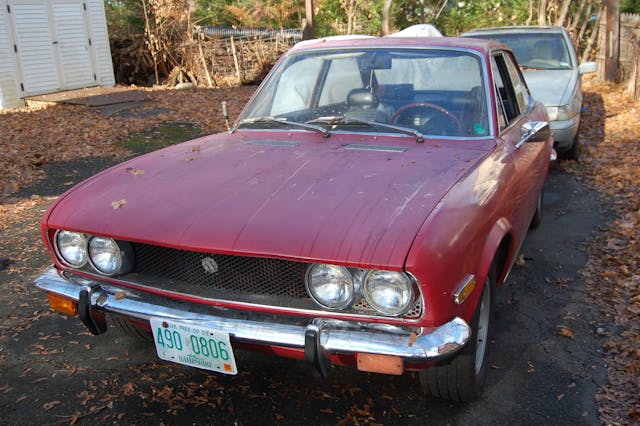
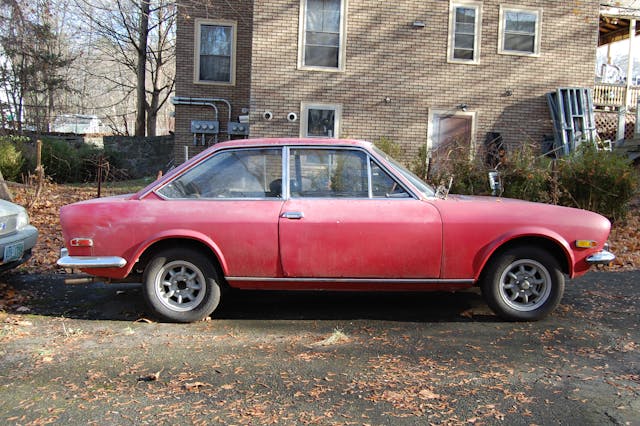
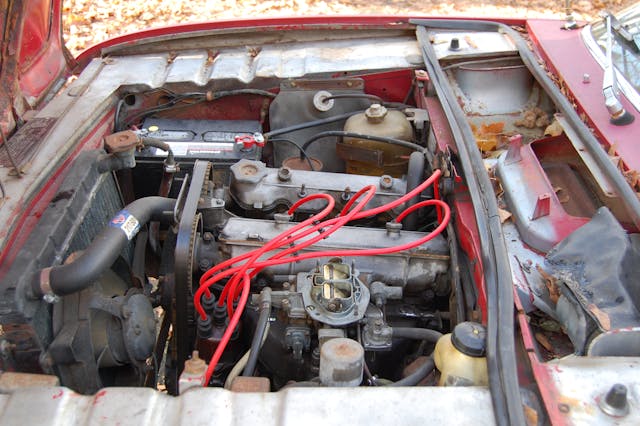
I wrote in a Hagerty piece about the rules of automotive attraction. If we love a car’s lines, love what it feels like sitting in the car, love the driving experience, and have some adolescent history with that model, we’re often hooked for life. My automotive backstory has absolutely no intersection with the Fiat 124 Sport Coupe, and I’d never driven one, so my attraction to the car was little more than academic. (Well, that’s not quite true; the car I learned how to drive a stick on was my mother’s 1974 Fiat 128, which she didn’t keep long because: a) it was a Fix-it-again-Tony car, and b) it rusted while you watched.) I did dig the Dino-like nose; I did like the black interior and the contrasting woodgrain steering wheel; and unlike many people obsessed with crack-free dashboards, I wasn’t put off by the chunk missing from the instrument cowl. But on the other hand, the car didn’t raise my heart rate.
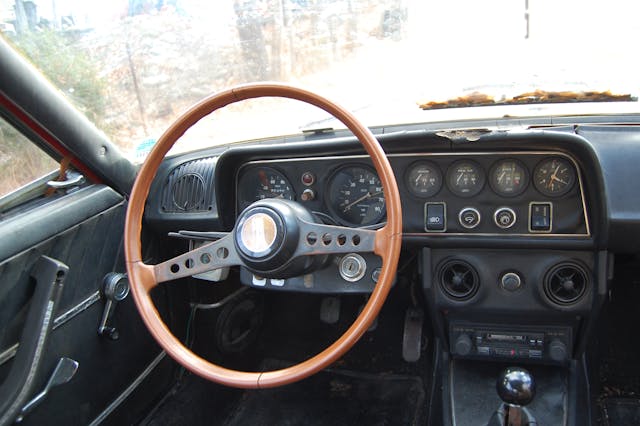
The seller started the car for me. Even in the cold, it fired up without a lot of difficulty and had a nice throaty idle. But it gave me a good deal of pause when he said that he needed to shut it off soon because there was very little coolant in the engine, a consequence of the car needing the water pump replaced, as he’d listed in the ad.
I walked around the car, trying to imagine adding it to my not-a-collection. More specifically, I was deciding if it made any sense buying it and shoehorning it into the one remaining garage space I really didn’t have, the one that requires cleaning the garage enough to put one car on wheel dollies and slide it sideways. Bottom line: I wasn’t feeling the love. For me to allocate my time, money, and space to a car, it should be something that makes me open my garage every day, walk in, look at the new purchase, and think, “Damn, I can’t believe that I own this,” and this didn’t meet that criteria. It wasn’t really even close. I’d probably think, “Damn, what did I just do?”
Still, I was there, and my self-imposed training from decades of looking at cars required me to do the due diligence so that I wouldn’t regret anything. I got on the ground, examined the rockers and other low-lying body parts, then skooched under as best I could to look at the floorboards.
And that’s when I saw the deal-breaker: There was rust-through where the left rear trailing arm attached to the body. I instantly had a flashback to the 1970 Triumph GT6+ I bought in 1976 when I was 18. It was rusted in exactly this spot. The seller told me about it and stressed that I needed to get it fixed as soon as possible. I was an 18-year-old kid and didn’t really take it seriously. The day after I bought it, I nearly put it into a telephone pole when the back end came around. So, OK, in an odd way, I suddenly did have a connection in my past with the Fiat, at least with this one part of it, and it was entirely negative. I looked more closely and saw other areas where the floorboard was rotted through. While certainly this could be repaired, it was far from the only thing wrong with the car. I had an immediate gut reaction, and that reaction was a clear unequivocal “no.”

I showed the seller the rust-through. He said he didn’t know it was there. I believed him; it was not easy to see. He encouraged me to make an offer for the car. I explained that showing him this wasn’t a negotiating tactic—that the rust-through in a structural area like that put the car on the other side of my line of interest. I thanked him for his time and headed home. About a week later, the car’s status on Facebook Marketplace changed to “sold.”
And that was that. I soon got wrapped up in the basket-case dead-for-decades drivetrain-removed Lotus Elan +2 I linked to at the start of this piece. I didn’t buy that one either.
I didn’t really think again about the 124 Sport Coupe until mid-February when someone sent me a link to a yellow one on Bring a Trailer that was for sale in Sweden. I looked at my photos of the car in Londonderry again and replayed the whole thing in my mind.
When I say that I’m “not a collector,” among the myriad of explanations (and, when you own 13 cars, it does require explanation) is that I don’t ever decide “I want to buy X” and then go and find the best example of X, which means looking online and buying remotely since “X” generally isn’t in your backyard. Instead, virtually everything I do is predicated on committing an automotive crime of opportunity, meaning that you stumble upon the sole needy example of “X” that is in your or someone else’s nearby backyard that you can actually look at it with your own eyes, and you make it happen. If I wanted a bargain Type BC Fiat 124 Sport Coupe, this was my chance. This was the one that was less than an hour from me. It wasn’t a total rust bucket, it was running and close to driving, it probably could’ve been made roadworthy with a $500 trip to a welder, and I probably could’ve gotten it for a fraction of the seller’s $5000 asking price. I now realize that, if I ever want one of these cars, this was my crime of opportunity, and I didn’t commit the crime.
So it goes.
Um, find it again, Tony?
***
Rob Siegel’s new book, The Best of the Hack MechanicTM: 35 years of hacks, kluges, and assorted automotive mayhem, is available on Amazon. His other seven books are available here, or you can order personally inscribed copies through his website, www.robsiegel.com.


I’m also a lover of the Fiat 124 Sport Coupe! I worked as a mechanic at a Fiat dealer in 68/69 and fell in love with the single headlight version. I was lucky enough to be able to “Test Drive” new or almost new versions and while the looks initially attracted me, I came to admire the mechanical side as well. At the time, the 124 Sport Coupe (single headlight) reminded me of a Maserati I saw in a magazine. BTW, you & I are similar car buyers – I have never bought a 100% car (except for the one & only new car I bought in 1978). I have owned 66 MGB (still have), 69 Europa (the few times I drove it, I had to take my size 9 shoes off to drive it – have you driven yours yet?), 70 MB 280S, 72 MB 280SE, 73 MB 280SEL 4.5, 91 MB 300B sedan (best car I ever owned) and a 74 911.
😉 Keep ’em on the road was always my motto!
My friend is now the owner of that exact Fiat 124!
He hasn’t began working on it yet but you did a great job documenting it all perfectly. I will be sharing this with him.